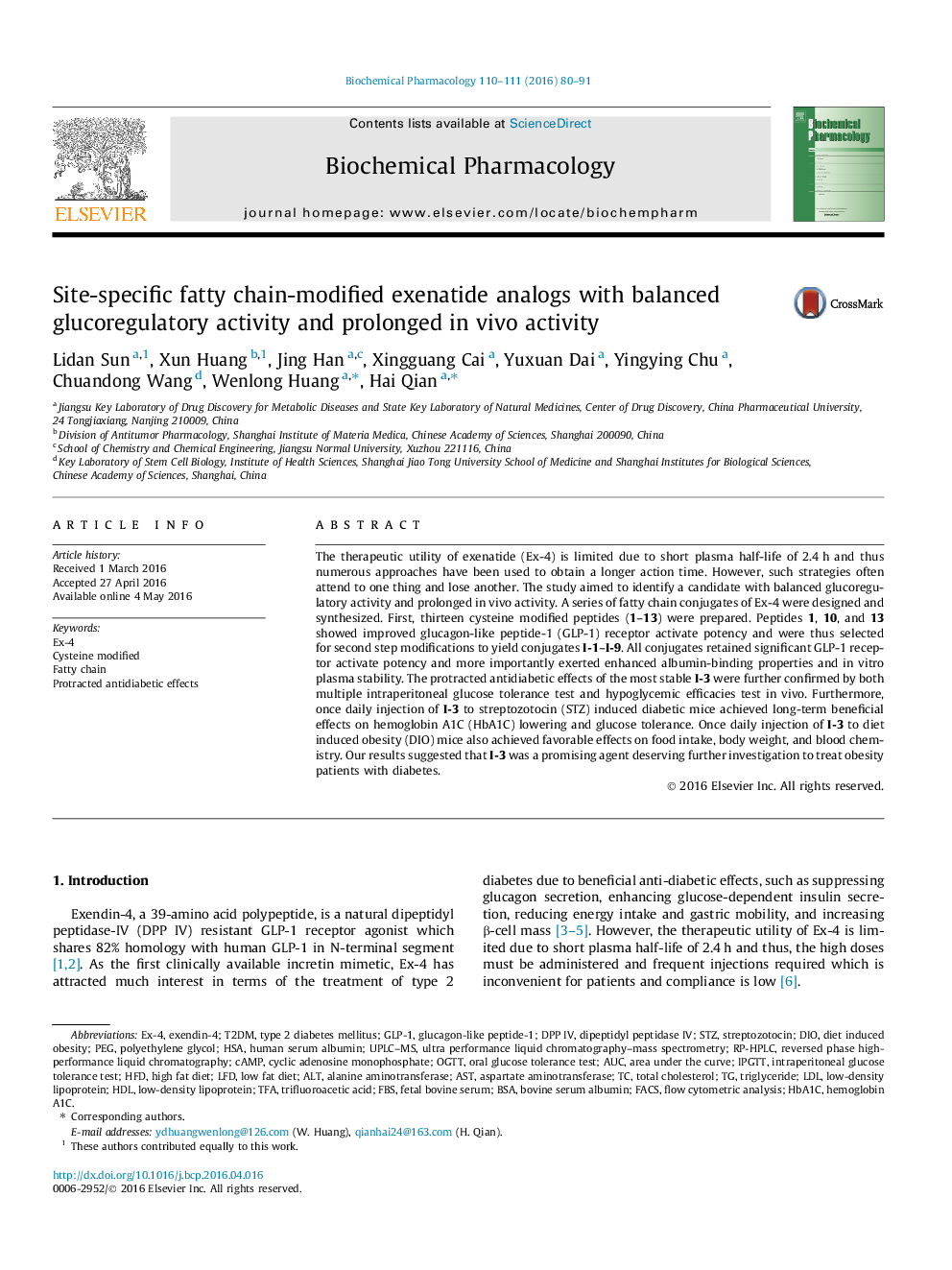| Article ID | Journal | Published Year | Pages | File Type |
|---|---|---|---|---|
| 5823137 | Biochemical Pharmacology | 2016 | 12 Pages |
The therapeutic utility of exenatide (Ex-4) is limited due to short plasma half-life of 2.4Â h and thus numerous approaches have been used to obtain a longer action time. However, such strategies often attend to one thing and lose another. The study aimed to identify a candidate with balanced glucoregulatory activity and prolonged in vivo activity. A series of fatty chain conjugates of Ex-4 were designed and synthesized. First, thirteen cysteine modified peptides (1-13) were prepared. Peptides 1, 10, and 13 showed improved glucagon-like peptide-1 (GLP-1) receptor activate potency and were thus selected for second step modifications to yield conjugates I-1-I-9. All conjugates retained significant GLP-1 receptor activate potency and more importantly exerted enhanced albumin-binding properties and in vitro plasma stability. The protracted antidiabetic effects of the most stable I-3 were further confirmed by both multiple intraperitoneal glucose tolerance test and hypoglycemic efficacies test in vivo. Furthermore, once daily injection of I-3 to streptozotocin (STZ) induced diabetic mice achieved long-term beneficial effects on hemoglobin A1C (HbA1C) lowering and glucose tolerance. Once daily injection of I-3 to diet induced obesity (DIO) mice also achieved favorable effects on food intake, body weight, and blood chemistry. Our results suggested that I-3 was a promising agent deserving further investigation to treat obesity patients with diabetes.
Graphical abstractA series of fatty chain conjugates of exenatide were designed and synthesized. I-3 showed favorable long-acting glucose-lowering effect in diabetic mice and appetite-suppressing effect in DIO mice.Download full-size image
